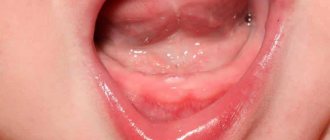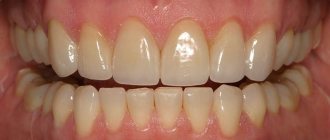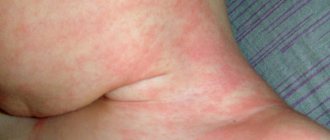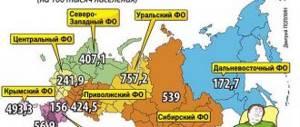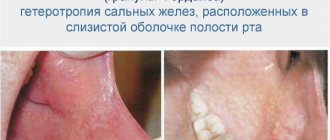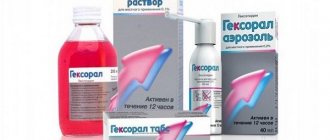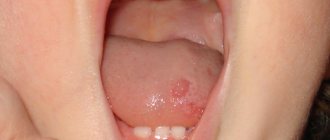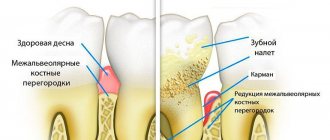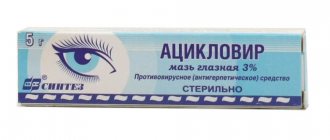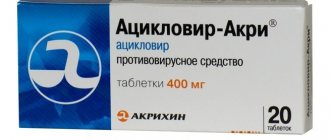Enterovirus causes intestinal upset because it is essentially an intestinal infection. In the early stages of the disease, recognizing infection with enterovirus is very problematic. It very successfully disguises itself as a common acute respiratory infection and acute respiratory viral infection; as a rule, it is diagnosed with the appearance of secondary symptoms - a rash in the throat and mouth, on the back and chest, on the palms and soles. The rash may appear immediately in all of the listed places or locally - only in the throat or exclusively on the palms and feet of sick children.
Causes of enterovirus infection
This virus is incredibly resilient. For a carefree existence, it needs a humid environment and the ambient temperature should not exceed 50 °C. If these conditions are met, it can live for years even when frozen in the refrigerator.
How does enterovirus infection occur?
- by airborne droplets upon contact with an infected person,
- through dirty hands with which they take food, and children simply put their hands in their mouths,
- due to poorly washed vegetables and fruits,
- through household items - towel, dishes, toys, etc.
- through water, infection is possible when swimming in open bodies of water with stagnant water.
Children under 10 years of age are most often infected with enterovirus, but very serious complications are possible in children under 2 years of age, which is why diagnosis and timely treatment of the youngest patients infected with enterovirus are so important.
Symptoms of enterovirus infection
By carefully observing their own child, in case of any disease, adults can be the first to notice some important features in the symptoms of the disease, thereby helping the pediatrician make the correct diagnosis. Such features when a child is infected with enterovirus infection are:
- High temperature at the first signs of illness, then its decline without antipyretics and increase again. Such zigzags in the temperature curve should alert parents.
- A child’s complaints of pain in the muscles of the arms, legs, and back, even before the rash, may already raise suspicion of infection with an enterovirus.
- In children under 2 years of age, the development of enteroinfection is accompanied by bloating, vomiting and diarrhea.
- At the first stages of the disease, all the signs of an acute respiratory viral infection may appear - runny nose, sore and sore throat, general malaise.
- On the third or fourth day, rashes appear on the child’s body:
- around the mouth
- in the throat,
- in the sky,
- on the palms of the hands and soles of the feet.
These rashes do not itch or hurt.
- Enlarged lymph nodes, especially submandibular ones.
- Signs of conjunctivitis are redness of the eyes, watery eyes.
It is very important here to pay attention to the signs that expose enterovirus.
Enteroviral rash in children and adults
What is enteroviral rash
First, the gastrointestinal tract is damaged, and then spreads to other internal organs. Enterovirus is more often diagnosed in children; pathology manifests itself in the form of intestinal symptoms, affecting the functioning of the brain and spinal cord, heart, lungs, and affecting the human skin. This variety belongs to the group of picornaviruses, which develop from RNA (ribonucleic acid) genetic material. Enteroviruses are represented by the following types of pathogenic microorganisms:
- polyviruses – 3 strains;
- echoviruses – 28 strains;
- Coxsackie A – 23 strains;
- Coxsackie B – 6 strains;
- other enteroviruses – 4 strains.
Symptoms
A rash due to enterovirus infection is only one of the typical signs of the development of pathology. Other symptoms vary depending on where the virus is located. There are common manifestations of enteroviral disease:
- fever;
- vomit;
- temperature increase;
- nausea;
- muscle pain, headache.
If we talk about the signs that are inherent in certain types of pathology, then the following manifestations are distinguished:
In children
- characteristic rash;
- general weakness;
- muscle pain;
- high body temperature;
- headache attacks.
- in addition to the symptoms described above, in some cases vomiting and nausea occur;
- After an enterovirus rash, small spots remain on the body.
In adults
A strong immune system helps prevent the development of the disease, but a person can still remain a carrier. The patient develops an enterovirus rash, fever, vomiting, nausea, loss of appetite and other typical signs of the disease. When an adult becomes infected with the ECHO virus, there is a risk of developing the following complications:
Causes
- workers in child care institutions;
- elderly people, children;
- patients with chronic pathologies;
- people with reduced immunity, high susceptibility to this type of virus (80% of the total population).
There are several main routes of infection with enterovirus:
Diagnostics
Enterovirus infection is determined based on examination of the patient, existing symptoms, laboratory tests, instrumental and hardware diagnostic methods. The latter are used:
- electroencephalography, if there is a suspicion of the development of encephalitis;
- echocardiography to study the condition of the heart;
- chest x-ray;
- slit lamp for diagnostics of the visual apparatus.
Analysis for enterovirus infection
In addition to the rash and general symptoms, the infection causes a number of complications, so it is important to determine the strain of the virus and prescribe adequate treatment. The following studies are carried out in laboratory conditions:
Treatment
For the treatment of enteroviral pathologies, there are general principles that apply to both adults and children. Certain groups of medications are used for treatment:
The use of medications from the group of antibiotics (Penicillin, Erythromycin, ampicillin) for this disease is not justified . The main task is to eliminate the cause of the pathology, therefore antibacterial agents are prescribed if a bacterial infection has occurred. For treatment, as a rule, groups of tetracyclines, penicillins, and in severe cases, macrolides and fluoroquinolones are used. The treatment regimen for the rash and other symptoms depends on the manifestation of the pathology.
There are no specific methods for treating viral infections, so symptomatic treatment is used, which is prescribed depending on the clinical manifestations of the pathology. The following directions apply:
Diet for enterovirus infection
Complex therapy includes nutritional adjustments. Children are advised to follow a special diet:
Folk remedies
- Take 20 g of viburnum berries, add a liter of liquid and cook for 8-10 minutes. Place 2-3 tbsp in a container. l. honey and drink a third of a glass 3 times a day.
- Radish for the treatment of viral pathologies. Wash the fruit, cut off the top, and partially remove the inside. You need to pour honey into the resulting cavity. Cover the root vegetable for 4-5 hours, and then drink the resulting liquid 1 tsp. 3 times a day.
Prevention measures
For the person who has been in contact with the patient, special preventive medications are prescribed. To prevent the risk of enterovirus infection, you need to follow a number of simple steps:
- Sick people need to be isolated (quarantine) during treatment.
- Conduct infection control at environmental sites.
- Drink only high-quality water and food.
- Wash vegetables and fruits thoroughly and carefully before eating.
- Use protection against small animals, rodents, insects,
- Strictly observe the rules of personal hygiene.
- Adhere to a work-rest schedule.
- Engage in moderate physical activity.
- Buy food only in familiar, trusted places.
Photo of enterovirus rash
The information presented in the article is for informational purposes only. The materials in the article do not encourage self-treatment. Only a qualified doctor can make a diagnosis and make recommendations for treatment based on the individual characteristics of a particular patient.
https://sovets.net/16995-enterovirusnaya-syp.html
Enterovirus rash
Particular attention should be paid to the rash. The appearance of the rash is very similar to that of measles. If the rash appears on the mucous membranes of the mouth and throat, it is in the form of blisters filled with exudate. Later, the blisters burst and ulcers form, which are quite painful. How many days does the rash last on a child’s body? It’s different for everyone, but 2-3 days after the rash it gradually goes away. Many people are interested in what to smear or how to treat rashes. The answer is clear - nothing. It goes away on its own.
Enteroviral rash in children and adults
What is enteroviral rash
First, the gastrointestinal tract is damaged, and then spreads to other internal organs. Enterovirus is more often diagnosed in children; pathology manifests itself in the form of intestinal symptoms, affecting the functioning of the brain and spinal cord, heart, lungs, and affecting the human skin. This variety belongs to the group of picornaviruses, which develop from RNA (ribonucleic acid) genetic material. Enteroviruses are represented by the following types of pathogenic microorganisms:
- polyviruses – 3 strains;
- echoviruses – 28 strains;
- Coxsackie A – 23 strains;
- Coxsackie B – 6 strains;
- other enteroviruses – 4 strains.
Symptoms
A rash due to enterovirus infection is only one of the typical signs of the development of pathology. Other symptoms vary depending on where the virus is located. There are common manifestations of enteroviral disease:
- fever;
- vomit;
- temperature increase;
- nausea;
- muscle pain, headache.
If we talk about the signs that are inherent in certain types of pathology, then the following manifestations are distinguished:
In children
- characteristic rash;
- general weakness;
- muscle pain;
- high body temperature;
- headache attacks.
- in addition to the symptoms described above, in some cases vomiting and nausea occur;
- After an enterovirus rash, small spots remain on the body.
In adults
A strong immune system helps prevent the development of the disease, but a person can still remain a carrier. The patient develops an enterovirus rash, fever, vomiting, nausea, loss of appetite and other typical signs of the disease. When an adult becomes infected with the ECHO virus, there is a risk of developing the following complications:
Causes
- workers in child care institutions;
- elderly people, children;
- patients with chronic pathologies;
- people with reduced immunity, high susceptibility to this type of virus (80% of the total population).
There are several main routes of infection with enterovirus:
Diagnostics
Enterovirus infection is determined based on examination of the patient, existing symptoms, laboratory tests, instrumental and hardware diagnostic methods. The latter are used:
- electroencephalography, if there is a suspicion of the development of encephalitis;
- echocardiography to study the condition of the heart;
- chest x-ray;
- slit lamp for diagnostics of the visual apparatus.
Analysis for enterovirus infection
In addition to the rash and general symptoms, the infection causes a number of complications, so it is important to determine the strain of the virus and prescribe adequate treatment. The following studies are carried out in laboratory conditions:
Treatment
For the treatment of enteroviral pathologies, there are general principles that apply to both adults and children. Certain groups of medications are used for treatment:
The use of medications from the group of antibiotics (Penicillin, Erythromycin, ampicillin) for this disease is not justified . The main task is to eliminate the cause of the pathology, therefore antibacterial agents are prescribed if a bacterial infection has occurred. For treatment, as a rule, groups of tetracyclines, penicillins, and in severe cases, macrolides and fluoroquinolones are used. The treatment regimen for the rash and other symptoms depends on the manifestation of the pathology.
There are no specific methods for treating viral infections, so symptomatic treatment is used, which is prescribed depending on the clinical manifestations of the pathology. The following directions apply:
Diet for enterovirus infection
Complex therapy includes nutritional adjustments. Children are advised to follow a special diet:
Folk remedies
- Take 20 g of viburnum berries, add a liter of liquid and cook for 8-10 minutes. Place 2-3 tbsp in a container. l. honey and drink a third of a glass 3 times a day.
- Radish for the treatment of viral pathologies. Wash the fruit, cut off the top, and partially remove the inside. You need to pour honey into the resulting cavity. Cover the root vegetable for 4-5 hours, and then drink the resulting liquid 1 tsp. 3 times a day.
Prevention measures
For the person who has been in contact with the patient, special preventive medications are prescribed. To prevent the risk of enterovirus infection, you need to follow a number of simple steps:
- Sick people need to be isolated (quarantine) during treatment.
- Conduct infection control at environmental sites.
- Drink only high-quality water and food.
- Wash vegetables and fruits thoroughly and carefully before eating.
- Use protection against small animals, rodents, insects,
- Strictly observe the rules of personal hygiene.
- Adhere to a work-rest schedule.
- Engage in moderate physical activity.
- Buy food only in familiar, trusted places.
Photo of enterovirus rash
The information presented in the article is for informational purposes only. The materials in the article do not encourage self-treatment. Only a qualified doctor can make a diagnosis and make recommendations for treatment based on the individual characteristics of a particular patient.
https://sovets.net/16995-enterovirusnaya-syp.html
Diagnosis and treatment of enterovirus infection
This disease is diagnosed based on:
- collecting anamnesis,
- clinical blood test,
- general blood test.
In fairness, it must be said that enterovirus is most often reported by a rash. Usually everyone perceives the onset of the disease as a normal acute respiratory infection.
Treatment of enterovirus is symptomatic:
- Nonsteroidal anti-inflammatory drugs as antipyretic and analgesic treatment.
- If you have diarrhea or vomiting, be sure to drink plenty of fluids to prevent dehydration. These can be still mineral alkaline waters, fruit drinks, dried fruit compotes, green tea.
- To support the immune system, it is advisable to take interferon.
- It is imperative to follow a gentle diet for the entire period of the illness and for some time after it:
- food should be cooked either steamed, or in the oven, or simply boiled,
- during the acute period of illness, it is recommended to drink plenty of water, rice water, well-cooked cereal porridges,
- in the subacute period, steamed ground dietary meat and light vegetarian soups are possible,
- vegetables and fruits during this period can only be given thermally processed - boiled or baked,
- lactic acid products are acceptable and desirable, but whole milk is strictly contraindicated, as are eggs, pastries, and chocolate.
Treatment
There is currently no specific treatment for enterovirus infections. Most often, medications are used to relieve the symptoms of the disease. Antiviral drugs are weakly effective against the virus and are used only in cases of severe disease.
- In uncomplicated cases, anti-inflammatory and antipyretic drugs are used, such as paracetamol, ibuprofen, etc.
- To reduce itching - antiallergic drugs.
- To prevent secondary bacterial infections (sore throat, diarrhea, conjunctivitis), antibiotics can be used, both locally and systemically.
- It is recommended to use prebiotics and probiotics to restore intestinal microflora.
- It is also recommended to give the patient rehydration medications (Rehydron) to prevent dehydration.
- Patients are placed on strict bed rest.
A few words about disease prevention
How to prevent enterovirus infection,
- maintain personal hygiene, wash your baby’s hands before eating and after each return from a walk,
- drink water from proven sources, or at least boiled water,
- wash fruits and vegetables in cold running water and then pour boiling water over them,
- do not swim in bodies of water with standing water,
- Do not use unwashed household items.
Following a few simple rules will significantly reduce the risk of infection with enterovirus. Therefore, observe your personal hygiene strictly and teach your baby to do the same. These skills will bring him great benefit in life and protect him from many diseases.
